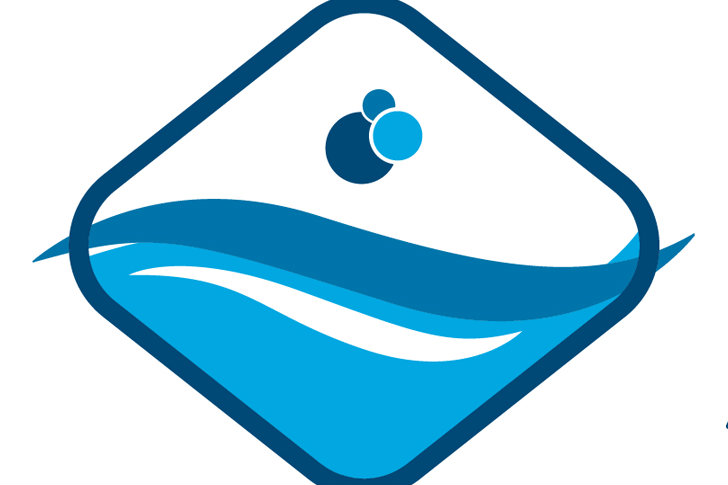Handling pool chemicals is not like working with, say, ballpoint pens. While the risk of ink stains are a clear and present danger, it’s nothing compared to blindness, lung disease and death, which are all very real side effects of mishandling pool chemicals — not to mention fires, explosions and the release of toxic gases.
And while chemical safety education is par for the course for pool professionals, there are always those few rules that are prone to get broken. We’ve gone to the experts to find the most overlooked rules in pool chemical handling, as well as an array of tips to help prevent these mistakes from happening in your business.
Keep liquid chemicals upright at all times
“Both customers and employees fail at recognizing that a case of liquid shock has a giant arrow pointing up,” says Joe Cimino, owner of Dolphin Pool Supply in Long Island, N.Y. “At least once a year [a customer or employee] flips [a bottle] over on the counter or heaves one on a shoulder. And, like magic, their navy blue shirt is white!”
Pool shock, a generalized term for a highly concentrated form of chlorine, can cause respiratory tract infections, serious eye damage, and burn the skin. It’s available in granular or liquid form and the liquid variety sometimes comes in a bottle with a vented cap. This is because the chemical degrades inside the bottle and the gases need to be released, Cimino says. For this reason, these containers should remain upright.
To keep customers and employees safe, Cimino has a sign posted as one enters the chemical section of the store, warning all who see it about the hazards of chemicals. It reads in part:
“Chemicals can spill or leak, causing severe damage to eyes, skin, clothing, carpeting or other surfaces and create fumes.
“Ship and store upright and secure while in transit to prevent upset. Bottle caps can loosen while in storage. Tighten before moving. Many closures are vented and can leak in transit.”
Recognizing that Dolphin Pool Supply employees have no control over what happens to the chemicals once they’re placed in a customer’s car, all those who purchase liquid shock or muriatic acid receive their product in a box or a bag to help contain spills.
Keeping chemical bottles in an upright and locked position is a concern on the pool-service side as well. Pool Scouts, a Virginia Beach, Va.-based service company with franchise locations in North Carolina and Texas, does not use liquid shock due to supply limitations. However, once the business spreads into a market where liquid is more readily available, the company will have trucks equipped with tanks to safely store the bleach, says Gabe Jensen, lead technician/certified pool technician for Pool Scouts
He’s witnessed firsthand the corrosive impact that bleach can have on a work vehicle. “I have seen tailgates held on by pieces of rope,” Jensen says.
In order to prevent spillage of other liquid chemicals and to keep technicians safe, all chemicals are kept in the back of Pool Scouts service vehicles. The rear section is completely separated from the cab, and the vehicles are equipped with a fan-vented system to remove any hazardous fumes.
Additionally, liquids are stored on the bottom shelves to prevent them from spilling onto other chemicals, which could cause a hazardous reaction.
Use your safety gear
Safety equipment, such as goggles, gloves and respirators, often are required for safe handling of hazardous pool and spa chemicals.
In fact, OSHA requires that employers conduct a workplace assessment to determine possible hazards in their businesses. They must then provide personal protective equipment to their workers and ensure its proper use. Criteria for OSHA-approved safety gear can be found at OSHA.gov.
The safety data sheets for any chemical will always include the types of safety equipment that is required. But alas, people do not always follow instructions.
Jensen certainly could have used a respirator back in the infant days of his service career. He had received no chemical training and used bleach to brighten the walls of a pool right after he performed an acid wash.
“When the acid and the chlorine mixed together, the fumes turned into a mustard gas,” Jensen says.
He was trapped with the fumes at the bottom of an empty pool, but managed to pull himself out and fill his lungs with fresh air.
“From that moment forward, a respirator has been on my truck,” he says.
To ensure that Pool Scouts techs don’t experience the same close call, Jensen educates all Pool Scouts franchisee employees about proper chemical handling. In addition, OSHA requires that employers develop a hazard communication program that includes an explanation of labels and safety data sheets, and how employees can obtain and use the appropriate hazard information, says an OSHA representative.
But while employers can’t be out in the field monitoring their service techs’ behavior, they can, at the very least, remind them about the proper safety equipment that needs to be used.
The water-testing system that Pool Scouts uses not only provides a ditigal readout notifying service techs what chemicals need to be added to the water, but it also places an asterisk next to the chemical. This reminds the technician that safety equipment needs to be used when handling that chemical, Bushey says. Techs then can refer back to their training and make use of the appropriate safety equipment.
Practice patience
In high school chemistry class, you probably participated in that one experiment where you had to mix two chemicals together and then record the color of your new chemical compound. You might have gotten impatient waiting for the color to change and then decided to add an extra dose of the first chemical to get the desired result. Then, you probably received a C- on the project when the compound turned the wrong color and a toxic dust cloud began to form inside the classroom.
“You have to handle chemicals with patience and adjust pool chemistry slowly,” says Sean Sepela, aquatics operations manager at George Mason University and pool operator instructor. “The question I get most often is, ‘I just added 10 pounds of this, why hasn’t [the water] changed?’”
But mixing chemicals isn’t like adding sugar to your coffee, he explains. It is a process.
For example, if a pool experiences a loose accidental fecal release, the Centers for Disease Control and Prevention recommends that the pool operator clear the pool and raise the free chlorine level to 20 parts per million for 12.75 hours. The amount of time it takes for a pool to reach the desired level depends on a variety of factors, including a pool’s turnover rate and circulation pattern. Therefore, if operators do not give the chemicals enough time to mix through the entire pool before testing it again, the readings will be lower than 20ppm. This could lead them to believe they need to add more chemicals.
But too much chlorine in the water can cause skin, lung and eye irritation. Therefore, to correct such an error, the operator would have to either dilute the chlorine by adding more water to the pool, or add sodium thiosulfate to neutralize it, Sepela says. At the very least, the lack of patience will result in a waste of product, which, over time, can increase annual operational costs.
Realizing that pool operators are sometimes under pressure to re-open a pool as soon as possible, Sepela always teaches the long-view, explaining that patience is key when it comes to water chemistry — no matter what.
Avoid mixing mistakes
Trevor Sherwood, owner of Pool Operation Management in Brick, N.J., has heard many stories of chemical mishaps in his 16 years of teaching Certified Pool Operator classes and running the service part of the business.
One of the most dangerous involves the improper labeling of liquid chemicals.
Pool operators have been known to fill neighboring containers of chlorine and muriatic acid for use in commercial pools. But rather than labeling the containers, they sometimes only label the lids. They then get confused or distracted and inadvertently put the lids on the wrong containers. The next person to replenish the chemicals adds the wrong ones to the wrong containers, and the blending of these two chemicals often results in a life-threatening toxic gas and, most likely, a call to 911.
Labeling the containers (instead of the lids) is the most obvious way to prevent this type of accident from occurring.
Incorrect mixing on retail shelves also can have toxic results. Certain ones, such as sodium dichloro-S-triazinetrione (dichlor) and calcium hypochlorite, shouldn’t even be shelved next to each other because they could cause a chemical fire, says Ted Lawrence, corporate retail category manager for Covington, La.-based PoolCorp.
But perhaps the biggest violation in the chemical-mismatch category is ignoring the rule that says to keep solids shelved over liquids. If chemicals are stored the other way around, and a liquid tips over and spills, it’s more likely to react with dry chemicals that are kept on lower shelves.
Lawrence has observed that approximately 50 percent of the pool stores he walks into are in violation of this rule. This is often done because the stores are low on retail space and need to fit everything into a tight area, he says.
This potential fire hazard/death trap can be remedied by having a planogram that clearly outlines the proper placement of all chemicals on the store shelves.
It’s also crucial to train your employees on how to use the planogram properly. Accidents typically occur because employees (not owners or managers) are stocking the shelves and haven’t been trained properly, Lawrence says. Some manufacturers offer retail planograms, but store owners can certainly create their own. It doesn’t have to be anything fancy: “It could be as simple as little stickers on the shelf,” Lawrence says.
To prevent these and other mistakes, these professionals encourage or even insist that their employees take advantage of education and certifications offered by industry associations.
Sherwood not only demands that all of his technicians complete the CPO certification, but they’re also given the opportunity to attend manufacturer classes. Additionally, technicians may complete industry training through the Association of Pool & Spa Professionals to become a Certified Maintenance Specialist or a Certified Service Technician.
Employers also should provide OSHA-required documents, and thoroughly explain procedures in their employee handbooks.
Chemicals often are the lifeblood of a pool and spa business, but they also are extremely dangerous. But with a little education, patience, and attention to detail, your store can become the safe and healthy work environment of your dreams.
-
3 Organizations to Help Keep Your Store Safe from Chemical Accidents
There are a variety of safety inspectors out there who can help maximize your store’s safety routines and stop chemical accidents before they start.





